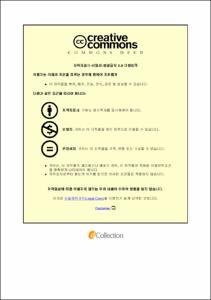HER2 양성 유방암에서 수술 전 TCHP 치료 반응과 면역 레퍼토리의 의의 분석
- Abstract
- Background: Despite of the great progression in the neoadjuvant treatment of HER2 positive breast cancer with the introduction of trastuzumab, approximately 30-40% of HER2 positive early-stage breast cancer still does not reach pathologic complete response (pCR) (1). Immune repertoires have been reported to have a significant impact on a wide range of diseases, including malignancy. We investigated T cell receptor (TCR) and B cell receptor (BCR) repertoires to find factors predicting the treatment response of HER2 positive early-stage breast cancer.
Materials and methods: Totally, 35 cases of HER2 positive breast cancer treated with neoadjuvant trastuzumab, docetaxel, carboplatin, and pertuzumab (TCHP) were recruited. The entire cases were divided into two experiments, consisting of 10 cases of preliminary experiment and 25 cases of main experiment. In preliminary experiment, the biopsy tissues before TCHP treatment and the surgical tissues after TCHP treatment were compared. In main experiment, the biopsy tissues before TCHP treatment were compared according to TCHP treatment response. T cell repertoire for TRA, TRB, TRG, and TRD, and B cell repertoire for IGH, IGK, and IGL was evaluated. Whole transcriptome sequencing was also done.
Results: In the preliminary experiment, regardless of TCHP response, density and richness of TCR and BCR tended to decrease after the TCHP treatment. SDI was decreased in TCR and increased in BCR. In the main experiment, SDI, density, and length of CDR3 of TCR and BCR repertoires showed no significant difference between pCR and non-pCR groups. Density, richness, frequency of MAIT, public TCR from healthy patients, and p53 targeting sequences also showed no significant difference. HER2 targeting TCR sequences were present only in a few cases of pCR group. When pCR and non-pCR groups subdivided according to the level of tumor infiltrating lymphocytes (TILs), density, richness, and SDI showed no significant difference in pCR/highTIL vs. non-pCR/highTIL and pCR/lowTIL vs. non-pCR/lowTIL. In pCR/lowTIL group showed higher proportion of low frequency clones in TRA (non-pCR/lowTIL, 0.01~0.1%, 63%, <0.01%, 32.9% vs. pCR/lowTIL, 0.01~0.1%, 45.3%, <0.01%, 51.8%, p < 0.001) and TRB (non-pCR/lowTIL, 0.01~0.1%, 26.5%, <0.01%, 72.0% vs. pCR/lowTIL, 0.01~0.1%, 14.7%, <0.01%, 84.1%, p < 0.001). The frequency of non-productive TRA and TRB, which has CDR3 sequences with a stop codon or out of frame for amino acids, was significantly higher in non-pCR/lowTIL than pCR/lowTIL group (TRA, 10.6% in non-pCR/lowTIL, 9.5% in pCR/lowTIL, p = 0.051; TRB, 6.1% in non-pCR/lowTIL and 4.7% in pCR/lowTIL, p = 0.002). When predicting treatment response with frequency of non-productive TCR in lowTIL group, area under curve was 0.833 and 0.976 in TRA and TRB, respectively. The pathways associated with response to steroid hormone, ERK1/ERK2 cascade regulation, and negative regulation of cell growth were up-regulated in the non-pCR group.
Conclusions: The role of diversity, richness, and density of TCR and BCR repertoire as predictive markers for TCHP treatment response was not confirmed. Composition of low frequency clones and frequency of non-productive TCR can be candidates for predictive factor of TCHP treatment response, however, validation study and further research for the physiologic mechanism of non-productive TCR are necessary.
|Background: Trastuzumab의 도입으로 HER2 양성 유방암의 치료가 크게 발전했음에도 불구하고, HER2 양성 초기 유방암의 약 30-40%가 여전히 병리학적 완전 반응(pCR)에 도달하지 않는다. 면역 레퍼토리는 악성을 비롯한 광범위한 질병에 상당한 영향을 미치는 것으로 보고되고 있다. 우리는 HER2 양성 초기 유방암의 치료 반응을 예측하는 요인을 찾기 위해 T 세포 수용체(TCR) 및 B 세포 수용체(BCR) 레퍼토리를 조사했다.
Material and methods: 수술 전 TCHP로 치료한 HER2 양성 유방암 총 35예를 모집하였다. 전체 사례를 예비 실험 10건과 본 실험 25건으로 총 2개의 실험으로 나누었다. 예비 실험에서는 TCHP 처리 전의 생검 조직과 TCHP 처리 후의 수술 조직을 비교하였다. 본 실험에서는 TCHP 처리 전 생검 조직을 TCHP 처리 반응에 따라 비교하였다. TRA, TRB, TRG 및 TRD에 대한 T 세포 레퍼토리와 IGH, IGK 및 IGL에 대한 B 세포 레퍼토리를 평가했다. Whole transcriptome sequencing도 수행하였다.
Results: 예비 실험에서는 TCHP 반응에 관계없이 TCHP 처리 후 TCR과 BCR의 밀도와 풍부도가 감소하였다. SDI는 TCR에서는 감소하고 BCR에서는 증가하는 경향을 보였다. 본 실험에서 TCR과 BCR 레퍼토리의 CDR3의 SDI, 밀도, 길이는 pCR군과 non-pCR군 간에 유의한 차이를 보이지 않았다. 밀도, 풍부함, MAIT의 빈도, 건강한 사람의 공통 TCR 및 변이 p53을 표적 서열도 유의한 차이를 보이지 않았다. HER2 표적 TCR 서열은 소수의 pCR 그룹에서만 존재했다. pCR 그룹과 non-pCR 그룹을 TIL 수준에 따라 세분화했을 때 밀도, 풍부도 및 SDI는 pCR/highTIL vs. non-pCR/highTIL 및 pCR/lowTIL vs. non-pCR에서 유의한 차이를 보이지 않았습니다. non-pCR/lowTIL군에서 TRA에서 저주파 클론의 비율이 더 높았다 (non-pCR/lowTIL, 0.01~0.1%, 63%, <0.01%, 32.9% vs. pCR/lowTIL, 0.01~0.1%, 45.3%, <0.01%, 51.8%, p < 0.001) 및 TRB (non-pCR/lowTIL, 0.01~0.1%, 26.5%, <0.01%, 72.0% vs. pCR/lowTIL, 0.01~0.1%, 14.7%, 0.01%, 84.1%, p < 0.001). 비생산적인 TRA 및 TRB의 빈도는 CDR3 서열에 stop codon이 있거나 out of frame이 있는 것으로 pCR/lowTIL군보다 non-pCR/lowTIL군에서 유의하게 높았다 (TRA, non-pCR/lowTIL 10.6%; pCR/lowTIL 9.5%, p = 0.051; TRB, non-pCR/lowTIL 6.1% and pCR/lowTIL 4.7%, p = 0.002). lowTIL군에서 비생산적 TCR의 빈도로 치료 반응을 예측할 때 AUC는 TRA와 TRB에서 각각 0.833과 0.976이었다. 스테로이드 호르몬에 대한 반응, ERK1/ERK2 cascade 조절 및 세포 성장의 음성 조절과 관련된 경로는 non-pCR 그룹에서 높게 발현되었다.
Conclusion: TCHP 치료 반응에 대한 예측 인자로서 TCR 및 BCR 레퍼토리의 다양성, 풍부함 및 밀도의 역할은 확인되지 않았다. 낮은 빈도의 클론이 많은 것과 비생산적 TCR의 빈도가 높은 것은 TCHP 치료 반응의 예측 인자의 후보가 될 수 있지만, 추가적인 검증과 비생산적 TCR의 생리학적 기전에 대한 연구가 필요하다.
- Issued Date
- 2022
- Awarded Date
- 2022-08
- Type
- dissertation
- Keyword
- 면역 레퍼토리; TCR; BCR; TCHP 치료 반응
- Alternative Author(s)
- Shin, Junyoung
- Affiliation
- 울산대학교
- Department
- 일반대학원 의학과
- Advisor
- 이희진
- Degree
- Doctor
- Publisher
- 울산대학교 일반대학원 의학과
- Language
- eng
- Rights
- 울산대학교 논문은 저작권에 의해 보호 받습니다.
- Appears in Collections:
- Medicine > 2. Theses (Ph.D)
- 파일 목록
-
-
Download
 200000630011.pdf
기타 데이터 / 3.83 MB / Adobe PDF
200000630011.pdf
기타 데이터 / 3.83 MB / Adobe PDF
-
Items in Repository are protected by copyright, with all rights reserved, unless otherwise indicated.